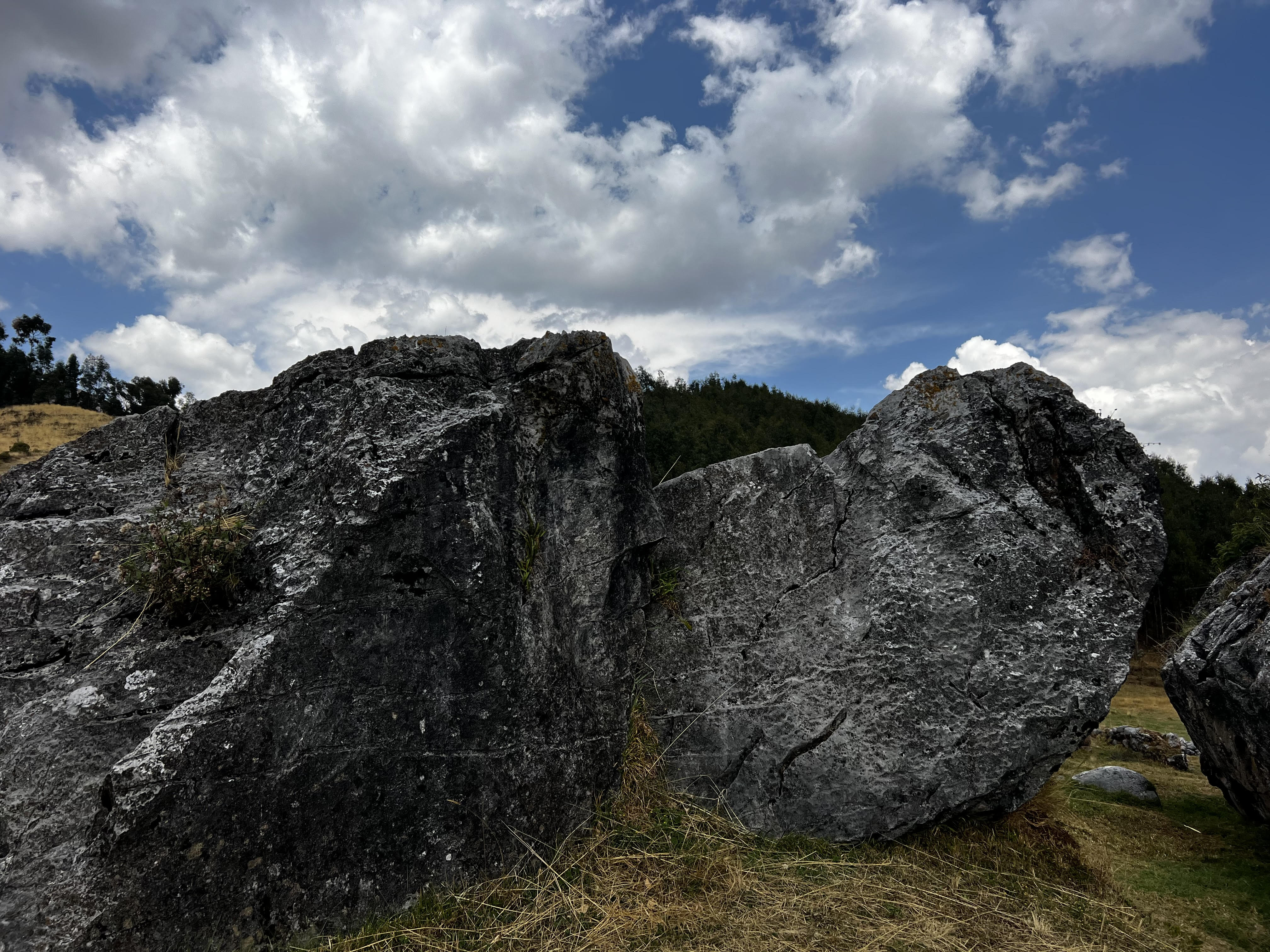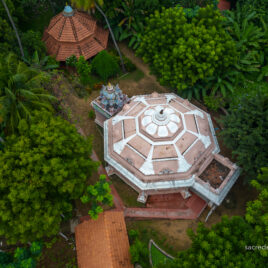
Nestled within the ancient Andean landscapes, the Temple of the Moon stands as a silent testament to a rich tapestry of history, spirituality, and celestial wonder. Quillarumiyoc, as it is known in the indigenous Quechua language, beckons intrepid souls to embark on a journey through time and tradition. In the heart of Peru, this sacred sanctuary has long been shrouded in mystery, its secrets echoing through the ages.
Come with us on our journey: Heart of the Pachamama with Puma Quispe Singona where on day six we visit this amazing site but for now join us as we embark on a virtual pilgrimage to unravel the enigmatic allure of Quillarumiyoc. In this exploration, we will delve into the temple’s historical significance, tracing its roots through the annals of time. Guided by celestial wonders and surrounded by the breathtaking Andean landscape, we will uncover the spiritual practices and rituals that have imbued this sacred site with a profound sense of reverence.
Journey to Quillarumiyoc: Rediscovering an Ancient Sanctuary
The pilgrimage to Quillarumiyoc is not merely a physical passage but a transcendental journey through time, unravelling the intricate tapestry of historical and cultural significance that blankets the Temple of the Moon. As we traverse the undulating paths leading to this sacred sanctuary nestled within the Peruvian Andes, we find ourselves stepping into the footsteps of ancient civilizations. The air is imbued with the echoes of rituals, and the stones beneath our feet whisper tales of a bygone era, inviting us to unlock the secrets of the past.
At the heart of Quillarumiyoc lies a profound connection to the cosmos, as evidenced by its celestial alignments and astronomical precision. The architecture of the temple reflects a symbiotic relationship between the earthly and the divine, echoing the Andean people’s deep understanding of the cosmos. As we stand in awe of the structural marvels, we are drawn into the spiritual worldview that guided the construction of this ancient sanctuary. Each stone seems to tell a story, and every carved symbol unveils a layer of meaning, urging us to contemplate the profound connection between the earthly realm and the heavens above.
Moreover, the historical significance of Quillarumiyoc extends beyond its architectural prowess. It served as a focal point for cultural practices, ceremonies, and rites that were integral to the lives of the ancient Andean people. The temple’s role as a spiritual center becomes evident as we delve into the narratives of the past, uncovering the rituals that celebrated life, death, and the cyclical rhythms of nature. The journey to Quillarumiyoc is, therefore, a voyage into the very essence of Andean culture, a rediscovery of the sacred practices that once animated these stones and infused the landscape with a spiritual resonance that endures to this day.
Mystical Alignments: Celestial Wonders at Quillarumiyoc

The celestial wonders of Quillarumiyoc are a mesmerizing testament to the astronomical knowledge and cosmic reverence of the ancient Andean civilizations. The Temple of the Moon, in particular, is an architectural marvel that showcases a profound understanding of astronomical phenomena. Its structures and alignments are thought to have been used for tracking celestial events, such as solstices and equinoxes, which were crucial for agricultural and ritualistic purposes. The positioning of the temple in relation to the moon, sun, and stars speaks volumes about the sophisticated astronomical skills of its builders, who recognized the heavens as an integral part of their spiritual and daily lives.
Exploring the cosmic importance of Quillarumiyoc further reveals its role as a center for celestial observation and worship. This connection between the terrestrial and the celestial is emblematic of the Andean worldview, where the rhythms of the cosmos were mirrored in the rhythms of earthly life. The temple thus served not only as a spiritual sanctuary but also as a cosmic observatory, where priests and astronomers could interpret the messages written in the stars and guide their community through the mysteries of life, agriculture, and the divine. The enduring legacy of Quillarumiyoc’s celestial alignments continues to captivate scholars and spiritual seekers alike, offering a glimpse into a world where the earth and sky were in constant, harmonious dialogue.
Unearthing the Past: Archaeological Insights into Quillarumiyoc
Archaeological excavations at Quillarumiyoc have been pivotal in peeling back the layers of history to reveal the multifaceted nature of this ancient site. Each discovery offers a tangible connection to the past, bringing to light the intricacies of the Temple of the Moon’s construction, use, and significance in the Andean world. Among the most striking findings are intricate carvings and stonework that demonstrate advanced masonry skills. These carvings are not merely decorative; they are imbued with symbolism and meaning, indicative of the deep spiritual and cultural beliefs of the people who created them. Artefacts unearthed at the site, including pottery, tools, and ceremonial items, provide further insights into the daily and ritualistic lives of those who frequented this sacred space. These artefacts suggest that the temple was not only a place of worship but also a hub of community activity.
The layers of soil and stone at Quillarumiyoc also tell a story of evolution and change. Through careful examination of the stratigraphy and the sequencing of architectural styles, archaeologists have been able to piece together a timeline of the temple’s history. This includes periods of construction and modification, reflecting the changing needs and beliefs of its users over time. Radiocarbon dating and other scientific analyses have helped establish a chronological framework, placing the temple’s origins and various phases of activity within the broader context of Andean history. These archaeological insights not only deepen our understanding of Quillarumiyoc as a physical structure but also as a living testament to the resilience and adaptability of Andean cultures. The Temple of the Moon, therefore, emerges not just as a relic of the past, but as a dynamic narrative that continues to evolve with each new discovery, offering an enduring legacy of the rich and complex tapestry of human history in the Andes.

As our exploration of Quillarumiyoc comes to a close, we are left with a profound sense of awe and a deeper understanding of the Temple of the Moon’s enduring legacy. This ancient sanctuary, with its enigmatic carvings and celestial alignments, is more than a relic of a bygone era; it is a living testament to the ingenuity and spirituality of the Andean people. The archaeological insights unearthed from its sacred grounds have not only illuminated aspects of the past but have also offered a window into the soul of a culture deeply intertwined with the rhythms of nature and the cosmos. If you would like to visit this sacred site for real, join us on a journey to Peru this October: Heart of Pachamama with Puma Quispe Singona.

